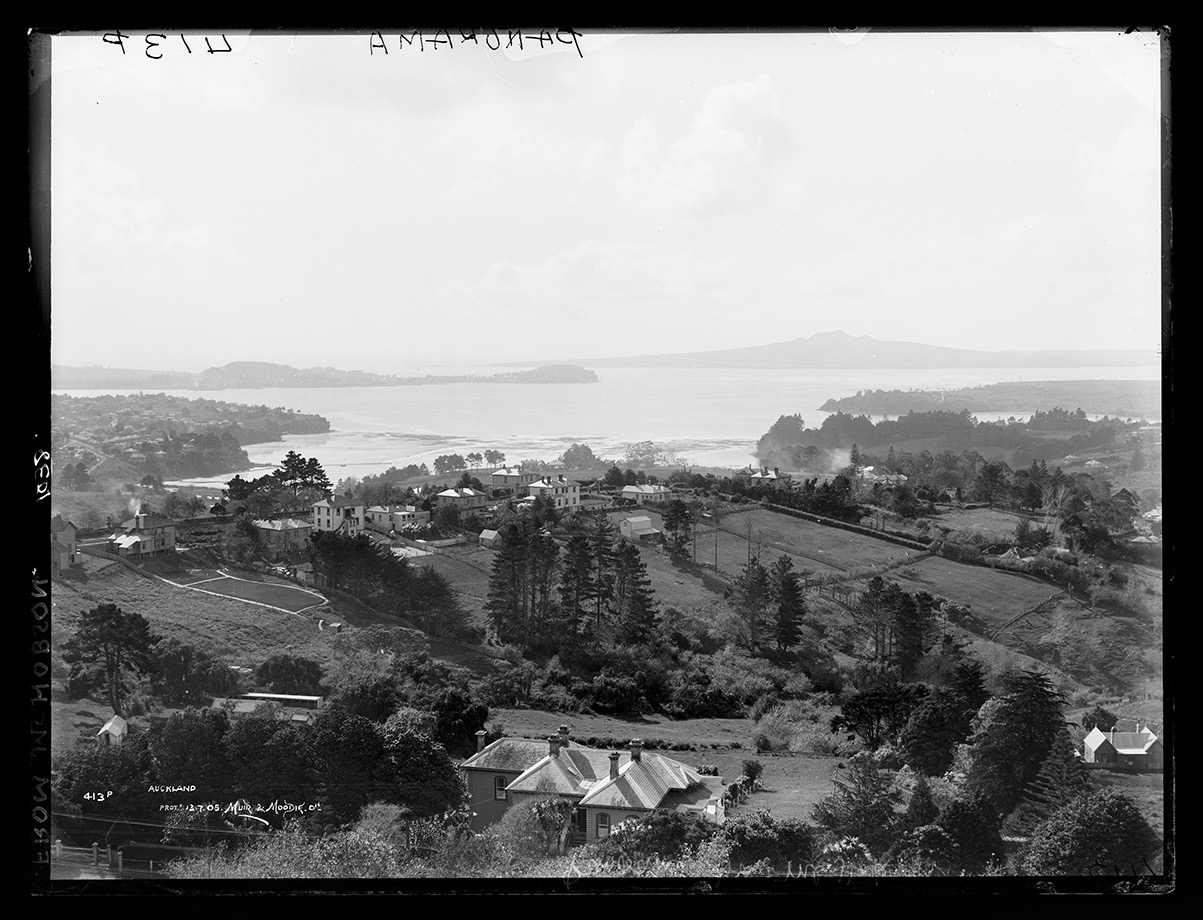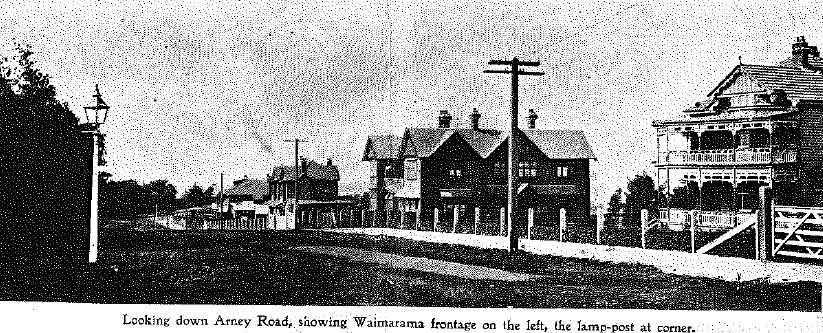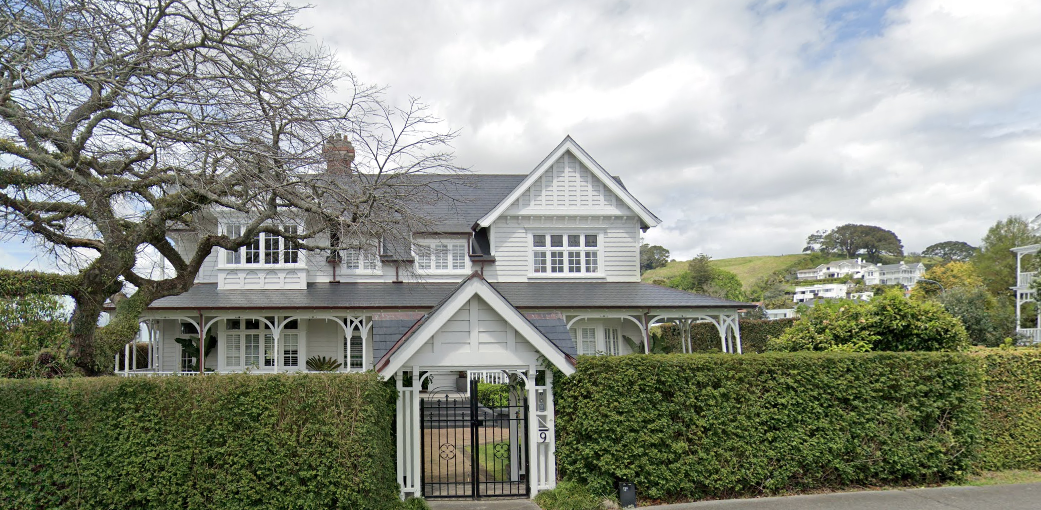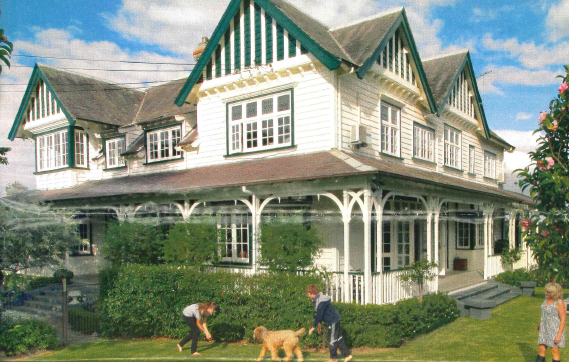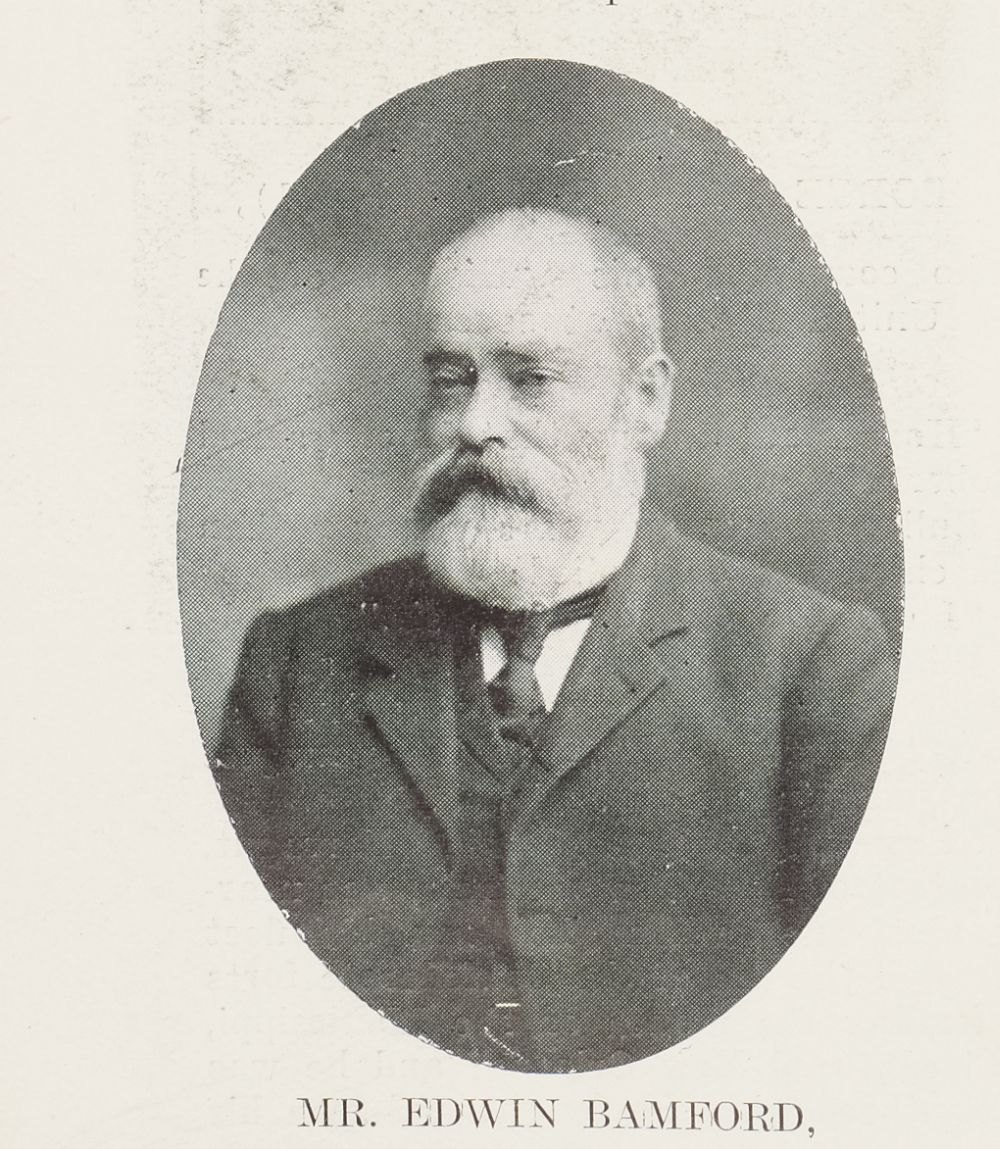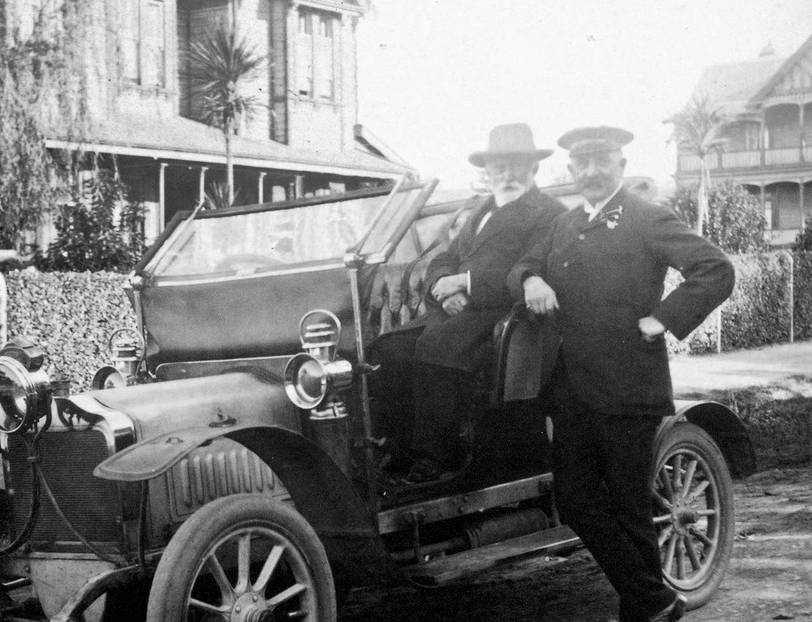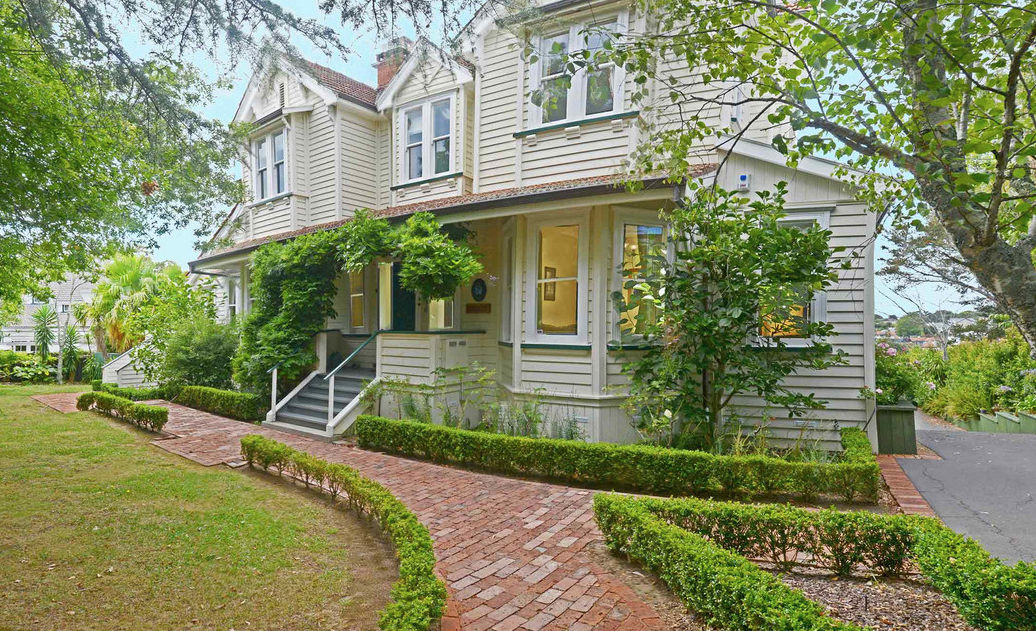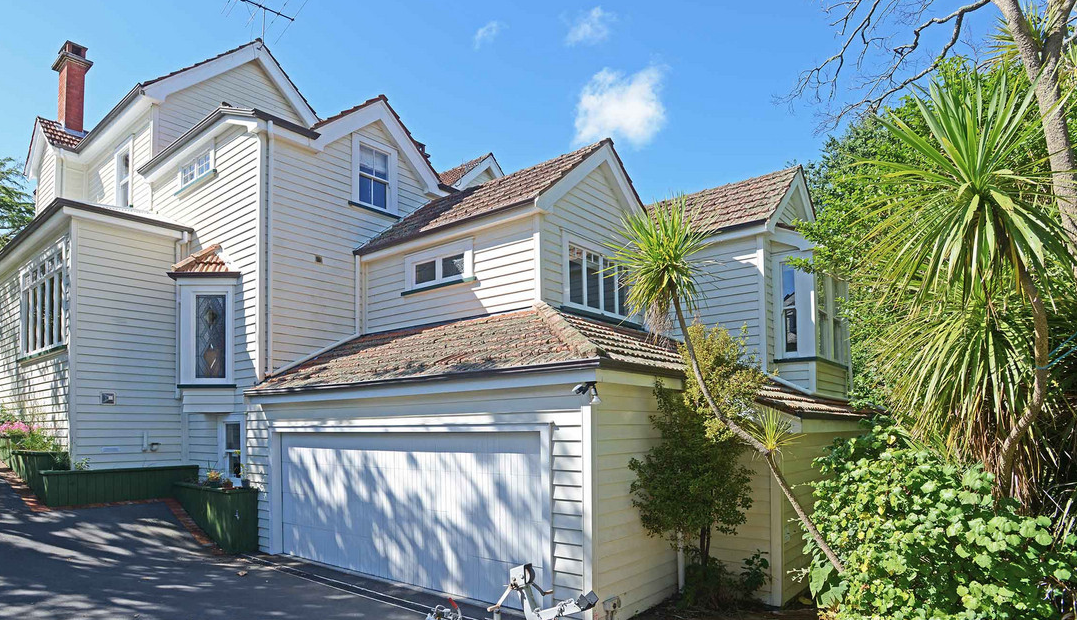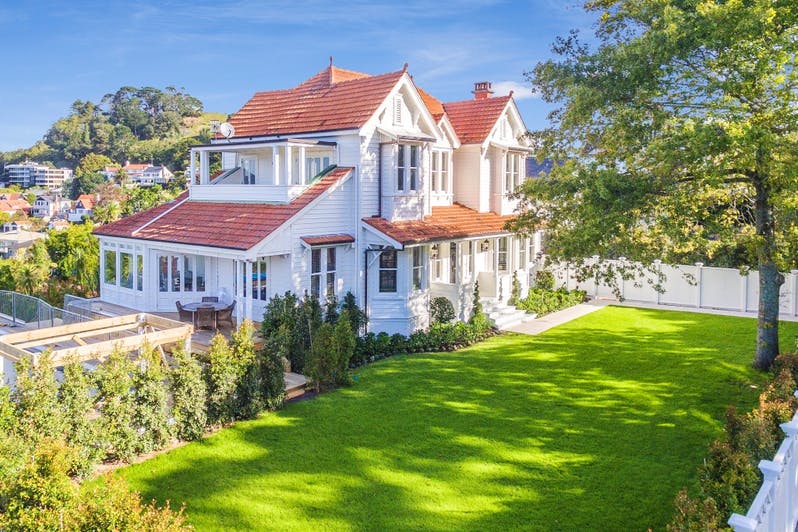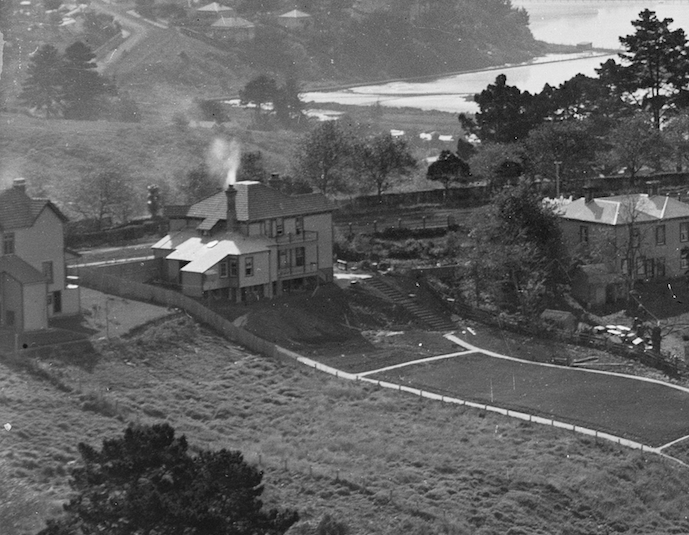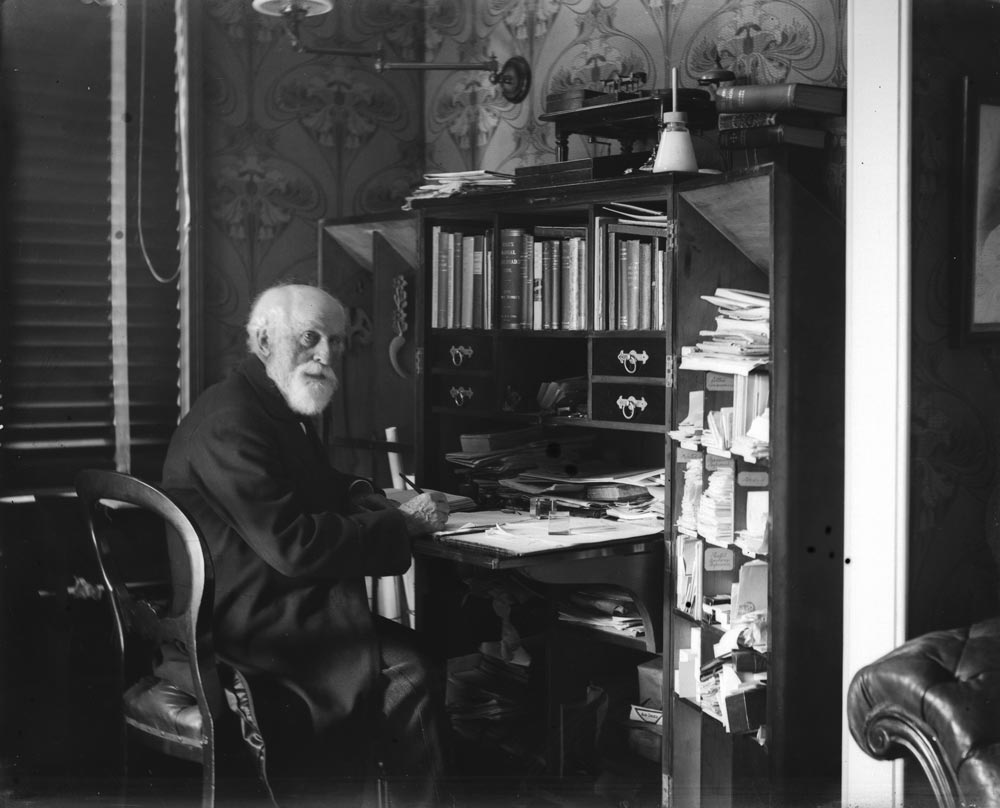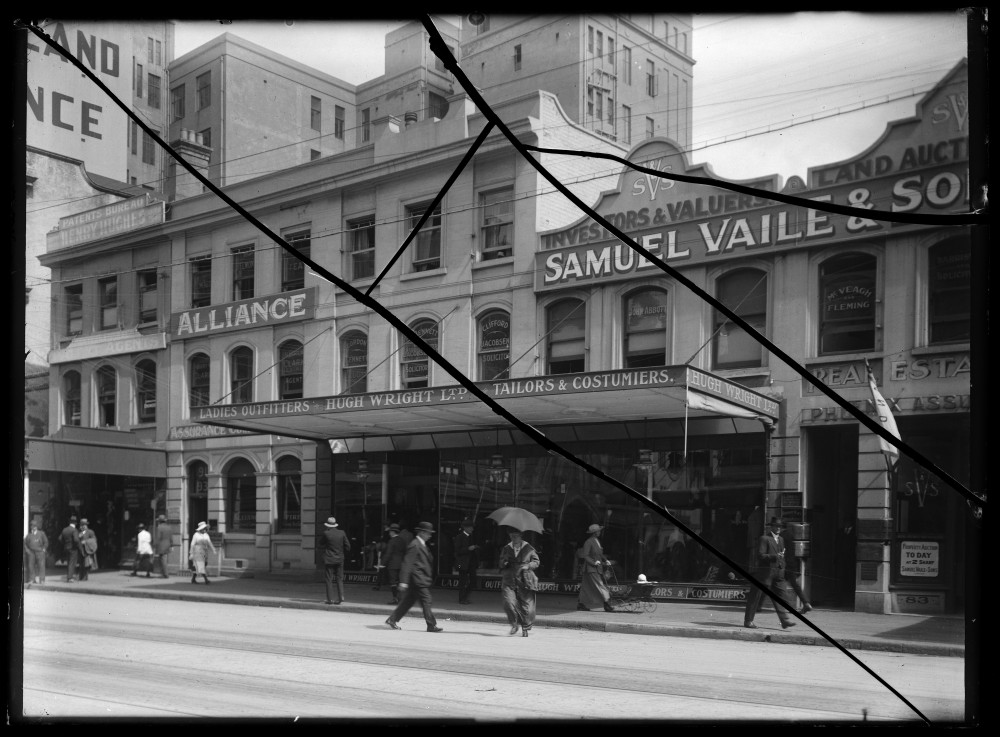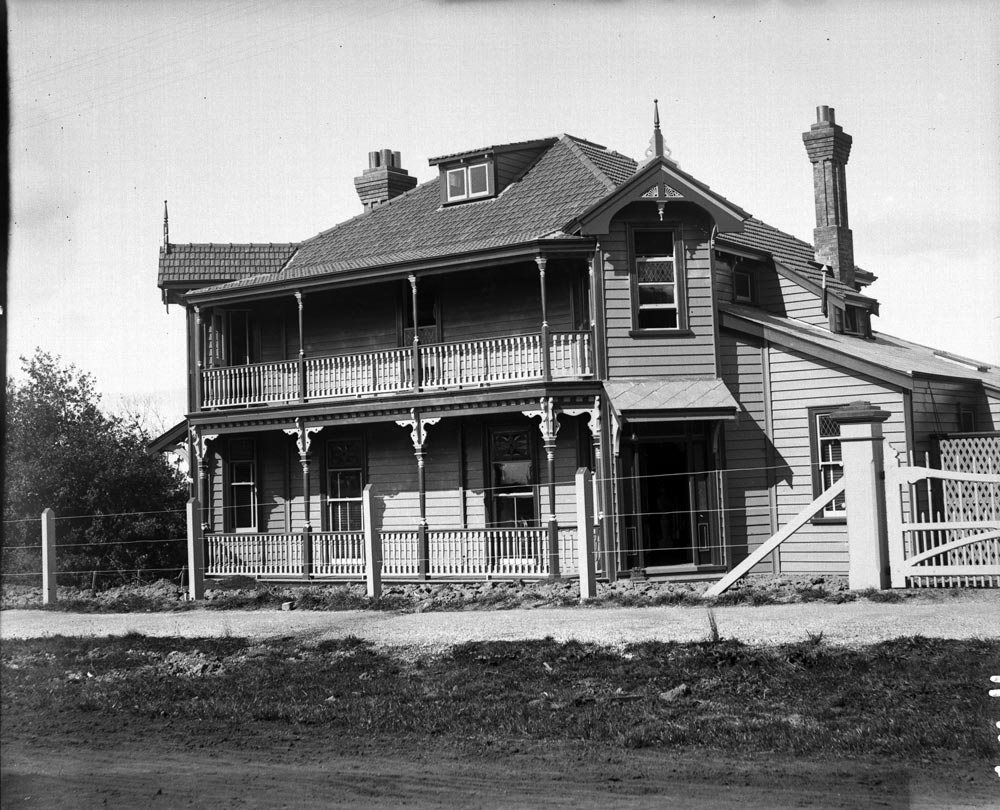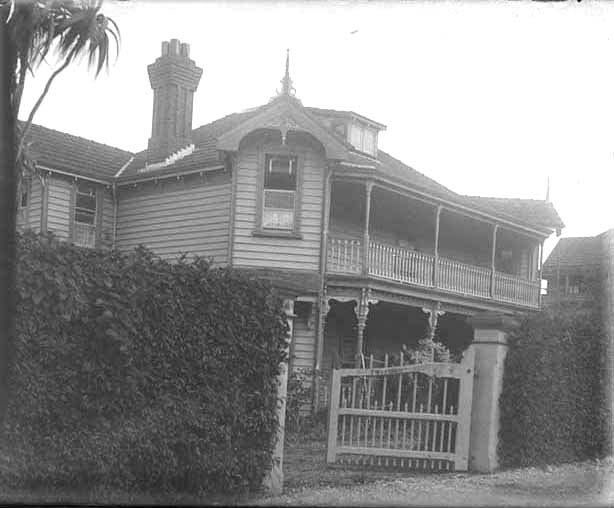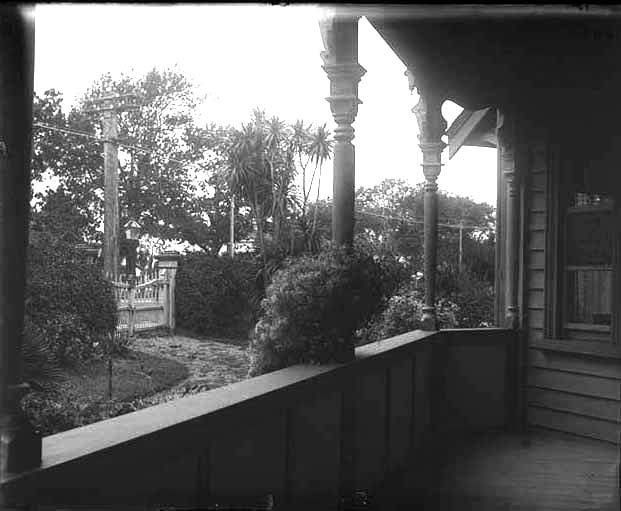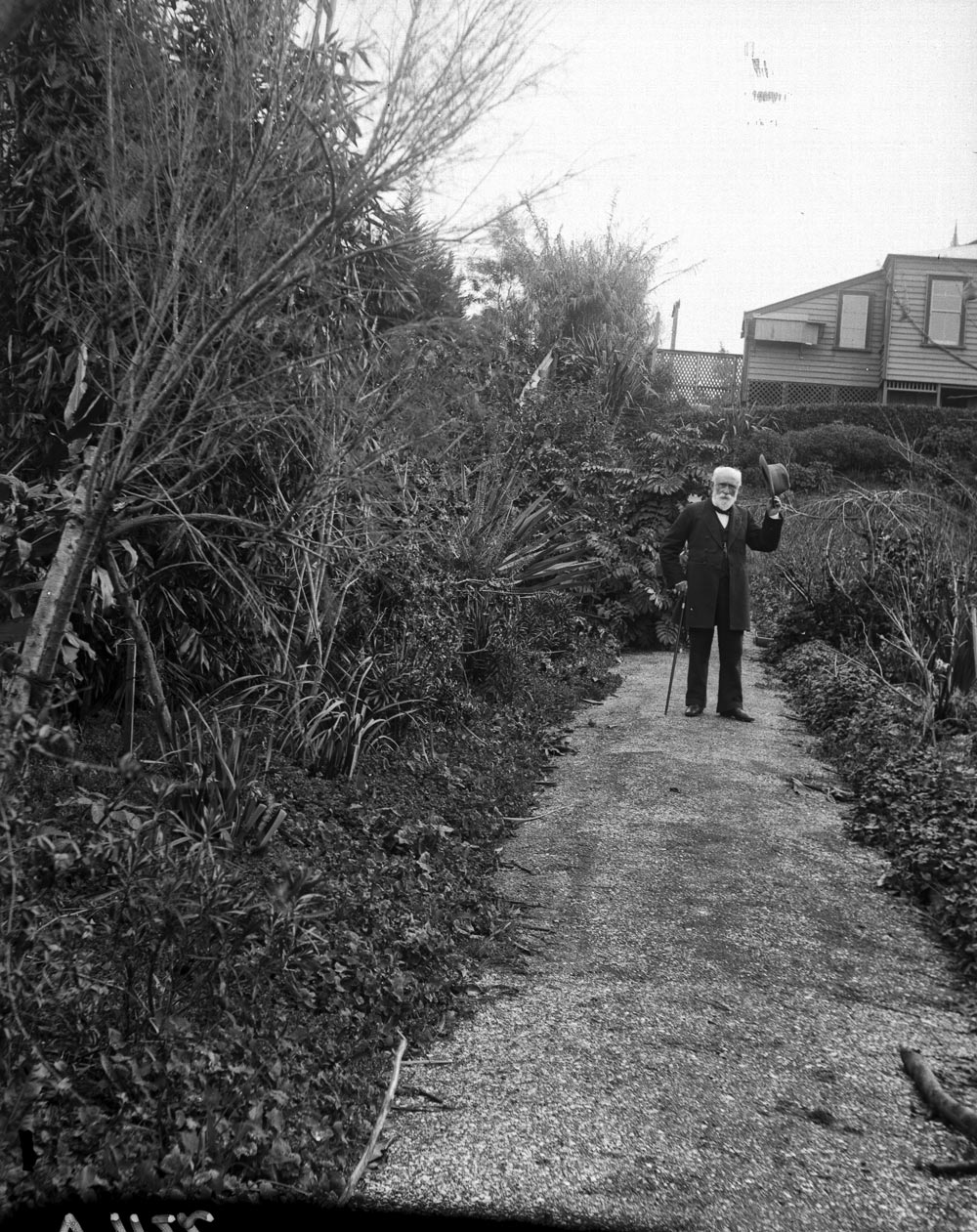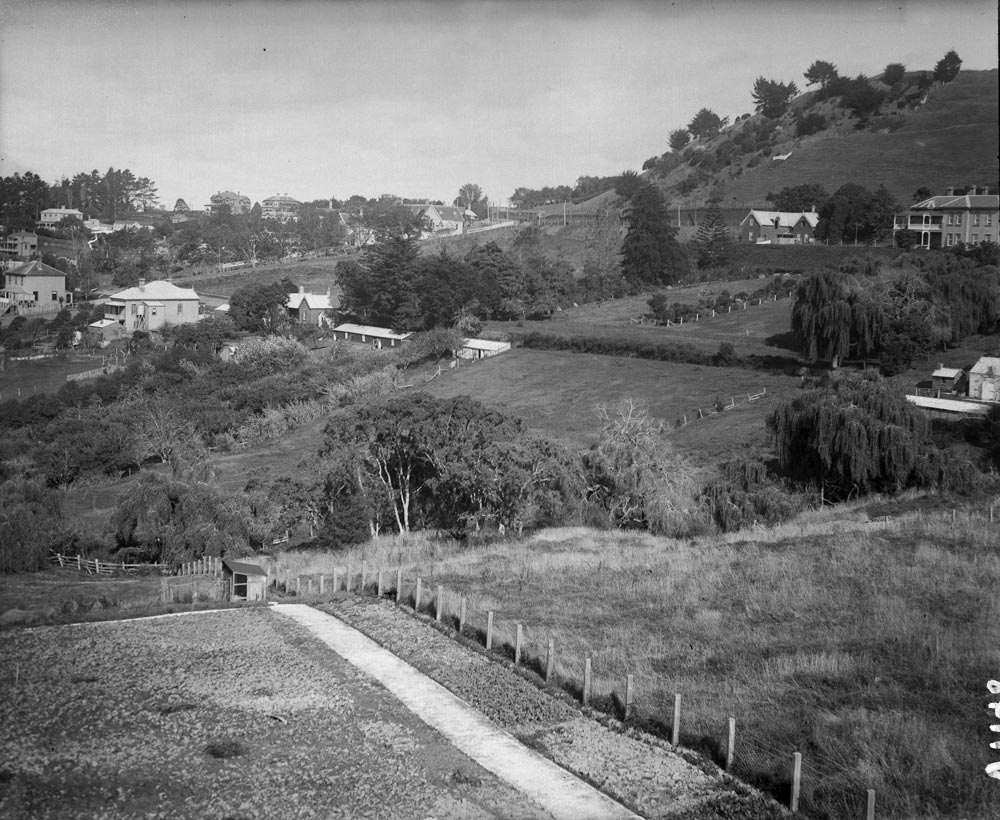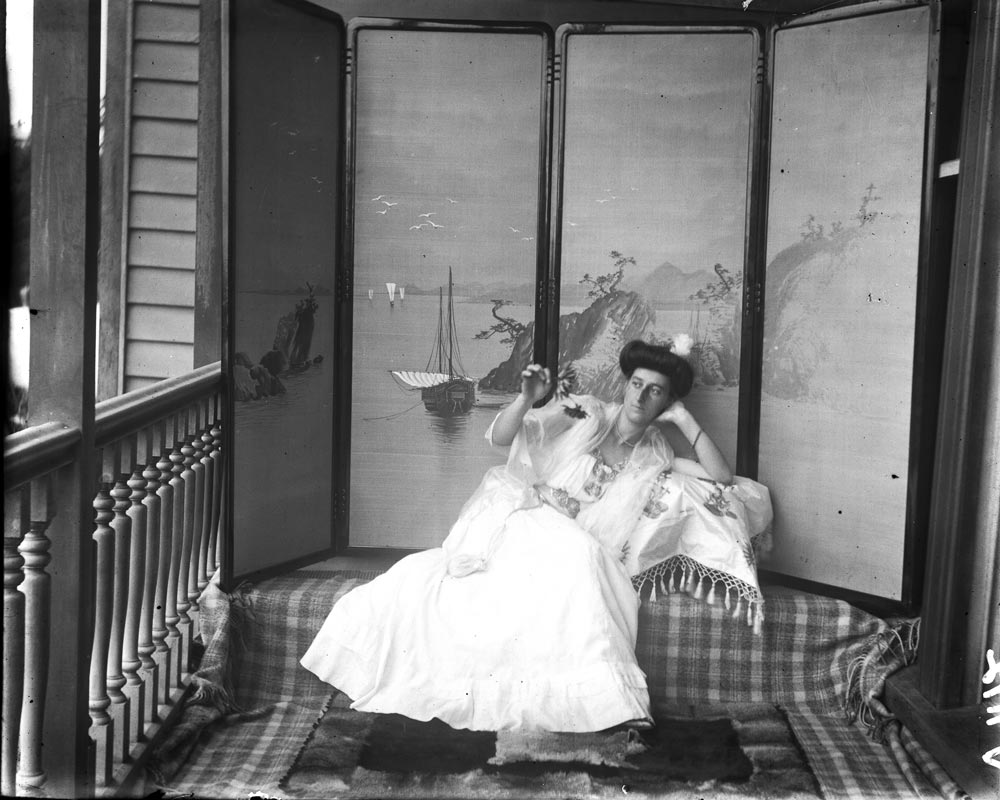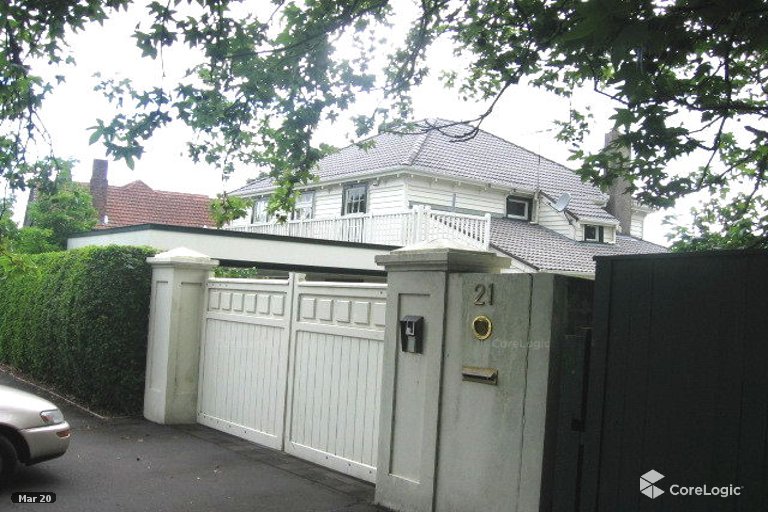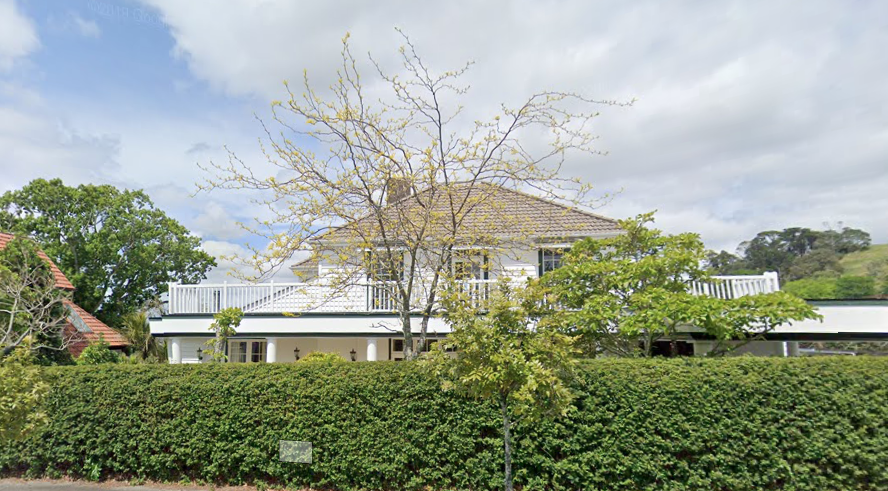Moving Day 1906: Nos. 9, 15 and 21 Arney Road, Remuera
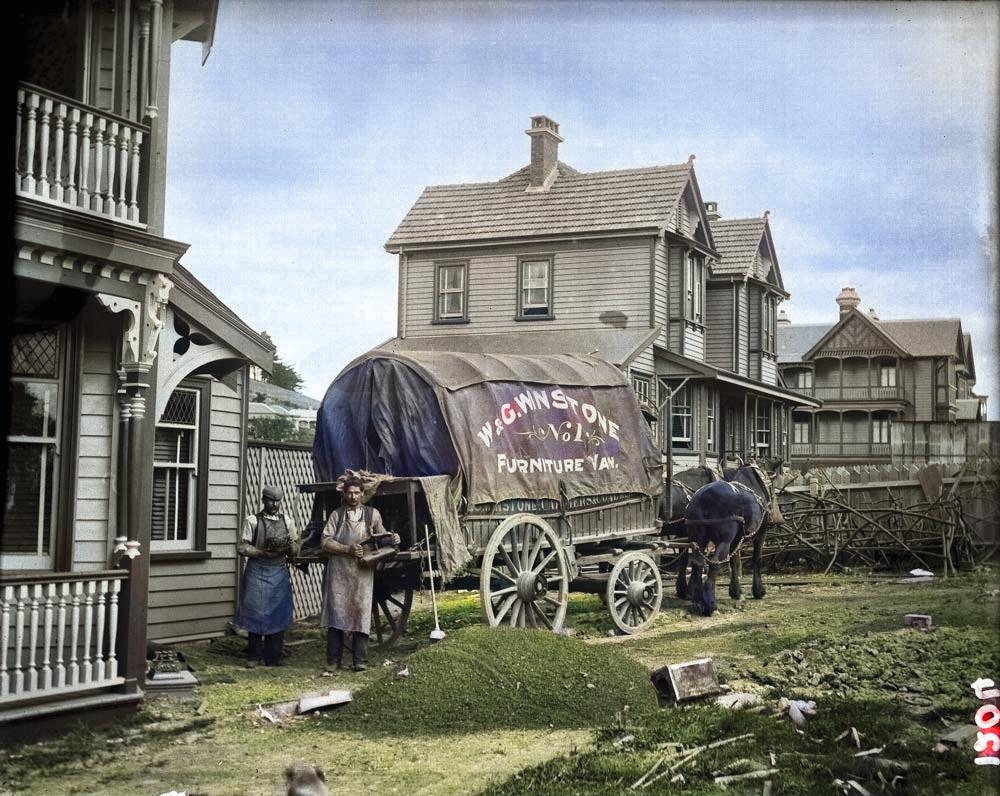
'Moving Day' Arney Road, Remuera, H E Vaile, 1906 (Auckland Libraries Heritage Collections 2-V1204). Colourised.
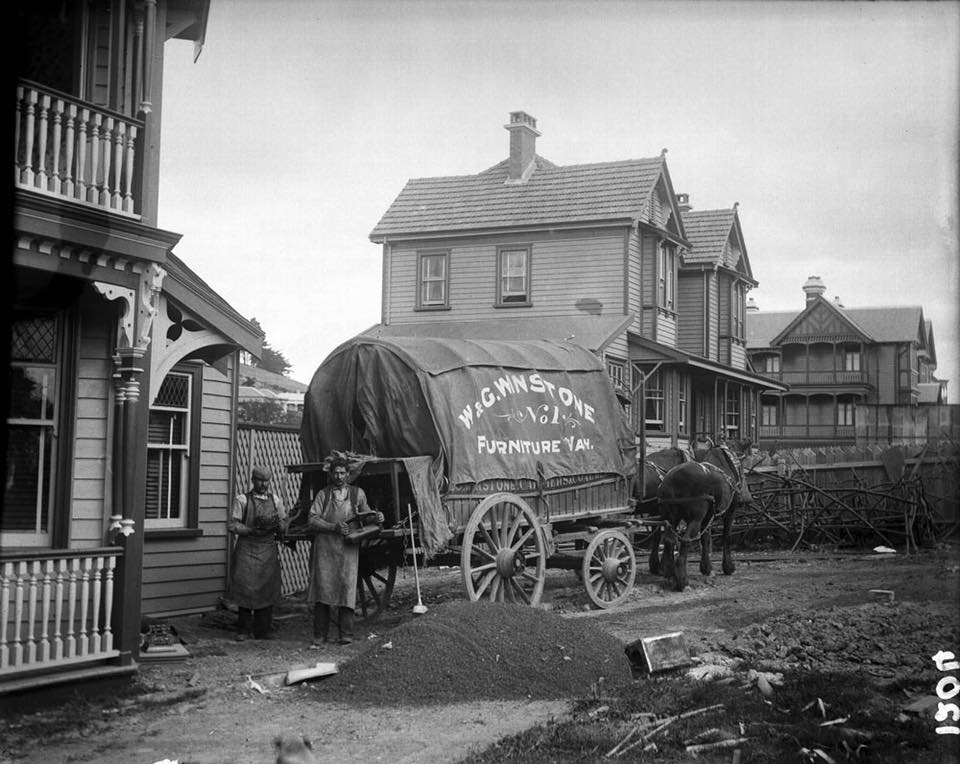
'Moving Day' Arney Road, Remuera, H E Vaile, 1906. (Auckland Libraries Heritage Collections V1204). Original.
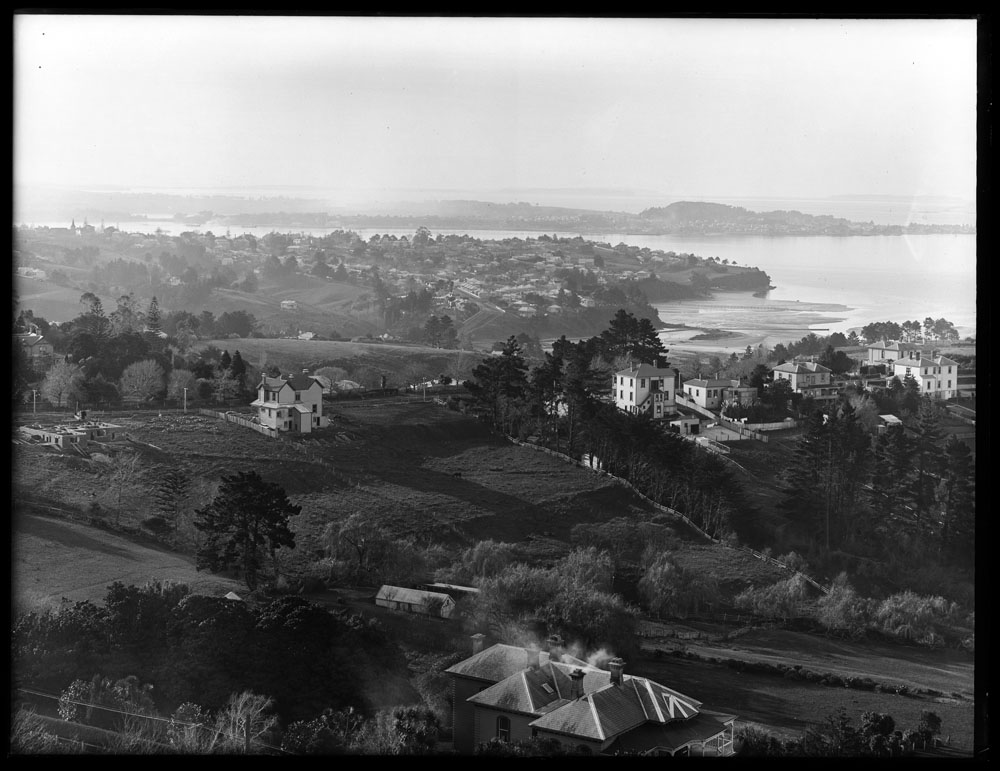
View from Mt Hobson, c1904, showing Bamford House and neighbouring construction site for Nicol House. (Auckland Libraries Heritage Collections 1-W1138)
Arney Road was named for George Alfred Arney (1810-1883), New Zealand’s second Chief Justice, who arrived in New Zealand in 1858.
Arney was the first owner of the house Waimarama, which on its orginal holding was 26 acres, with a Bassett Road address at the top of what would become Arney and Seaview Roads. The house commanded a magnificent view over the Waitemata Harbour and the Hauraki Gulf.
This fine property later became the home of Mr James Russell, then Mrs Kate McCosh Clark when it underwent subdivision, and was sold in May 1903.
The Waimarama subdivision claimed “every site has fine sea views that cannot be built out, and such sites must always command large and special values. For the reason that the panoramic seascape from Remuera is admittedly the finest picture in the Australasian colonies, and as time advances these sites will become more and more valuable, for there is only one Remuera, and there are not two Waimaramas”. [1]
“Arney Road too is the most elegant residential thoroughfare in Remuera, being just off the tram line; the residences comprise many of the largest and handsomest in the district, with beautiful grounds, and the road in a graceful sweep leads from the tram line on the high road down to the waterfront in Hobson Bay.”[1]
The Hubert Earle Vaile 1906 ‘Moving Day’ photograph captures three iconic Arney Road houses. Whilst all three have been significantly renovated over the years, nonetheless they remain early examples of Remuera’s built heritage. (1)
The houses did not have street numbering pre-WW1, and by the 1920s in the Cleaves’ records, they respectively appear as numbers 3 (9), 7 and in the 1940’s variably No.17 (15), and 9 (21). For ease of identification current street numbers are used in this narrative. [2]
In the Arney Road ‘Moving Day’ photograph, the house directly behind the W and G Winstone’s furniture van is the (Edwin) Bamford House at No.15, to the left is Twyford, the home of Samuel Vaile at No. 21, and to the far right at No. 9 is the home of shipbuilder George Turnbull Nicol.
In 1903 shipbuilder George Turnbull Nicol (Niccol) (1858-1940) [3] moved from Devonport to a 1.6ha lot at No. 9 Arney Road and built a kauri homestead. The house was designed by Arthur P Wilson. Twelve years later he built No. 11 Arney Road as wedding present for his daughter who married into the Hanna family, now referred to as the Hanna House. [4] He later moved across the road, with his wife Ada Beatrice (nee Eastham) (1865-1938), to No. 8 (12) Arney Road. By 1920, solicitor Charles J Tunks owned No.9.
No. 9 and No. 11 Arney Road were built to a very with high standard, by the Nicol family ship building business at Mechanics Bay.
The original homestead at No. 9 Arney Road stands on the corner of Arney Road and Buttle Street. The house features in its entrance stained glass windows over a granite-floored porch, leading to the main entrance foyer, polished kauri floors, panelling and staircase, stained-glass, bay windows, a formal dining room with a grand fireplace with a ceramic tile surround, five bedrooms, and surround verandas. The house has been extensively renovated for modern living.
The Bamford House at No.15 Arney Road was built for Edwin Bamford (1846-1928), [5, 6] solicitor and the Registrar of Deeds and District Land Registrar for the Auckland district, and wife Harriette (nee Batham) (1849-1924), by their son architect Noel Bamford (1881-1932).
Early photographs would suggest that Bamford House was the first of the three houses built, around 1902-3. However, Bamford family lore says it was the first house that Noel designed after coming back from working with eminent Edwardian architect Sir Edwin Lutyens in England, in 1906. Noel Bamford went on to design, with Hector Pierce, Neligan House in Parnell for the Anglican Bishop of Auckland (1910), and Remuera’s ill-fated Coolangatta (1911).
Edwin is recorded on the Electoral Roll as living in Remuera from 1905, prior to that in Canterbury and Hawkes Bay, and latterly in Wellington as the Register General of Lands. He retired in 1911. Wises NZ Post Office Directories have him still in Arney Road until 1926. By 1933 merchant Walter A Donald (1890-1975) was the owner of the house.
The plantation-style homestead once dominated a large land-holding on top of the ridge of Arney Road. [7] In 2016 No.15 was extensively renovated for sale, by Icecream entrepreneur Diane Foreman’s Emerald Group. [8]
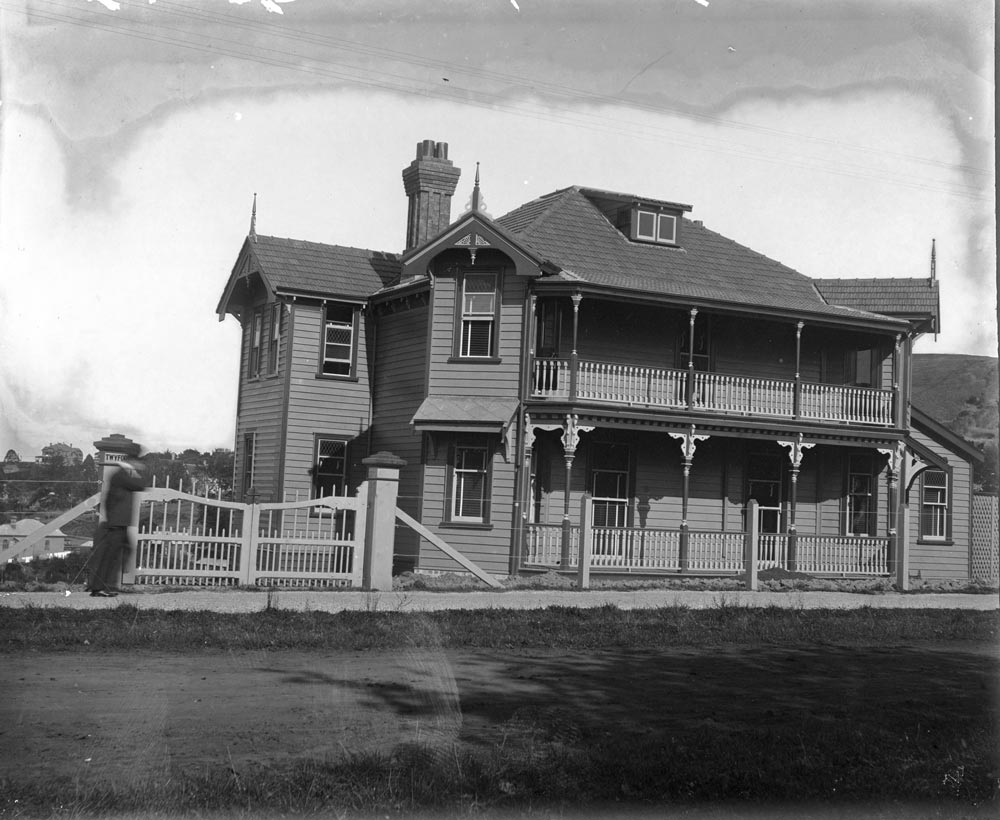
Twyford, Samuel Vaile's house in Arney Road, Remuera, 1906 (Auckland Libraries Heritage Collections 2-V1190)

Looking at Twyford from gate showing front door and window (Auckland Libraries Heritage Collections 4-9135)
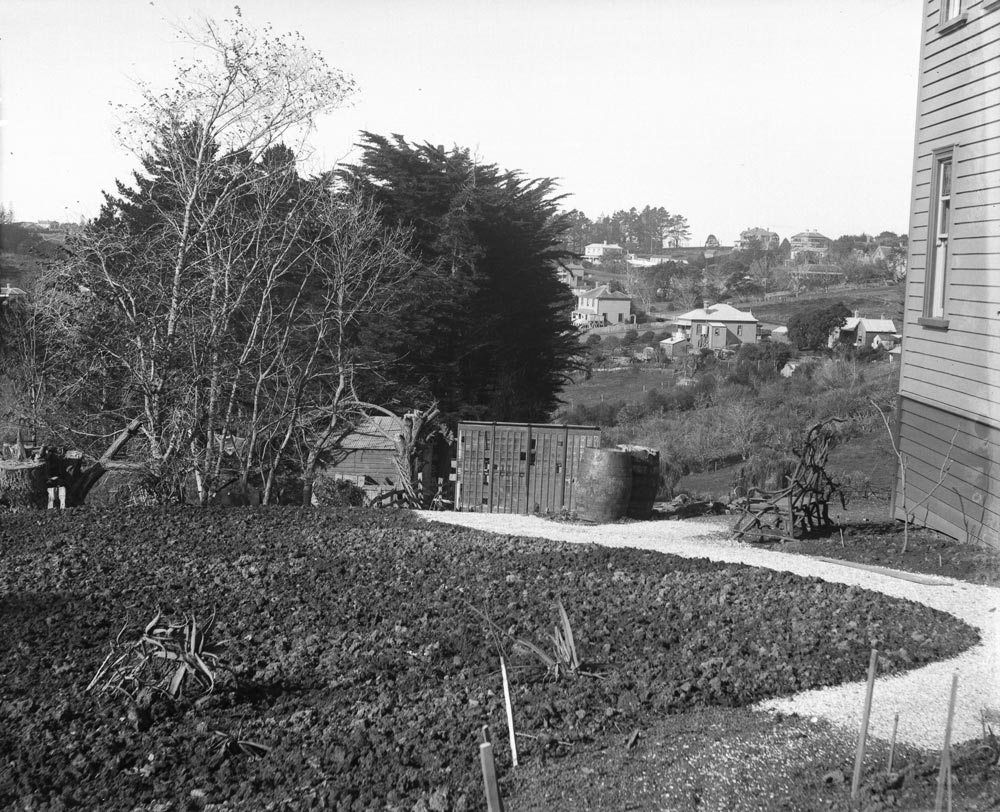
The garden of Samuel Vaile's home Twyford in Arney Road, Remuera to houses beyond (Auckland Libraries Heritage Collections 2-V1199)
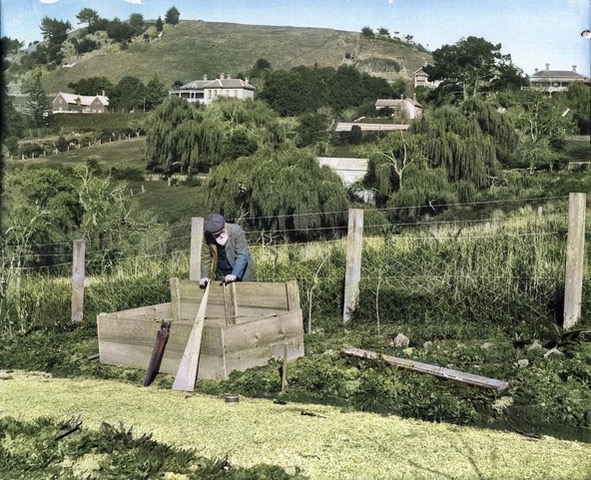
Samuel Vaile in his garden at Twyford, 1905. (Hubert Earle Vaile image. Auckland Libraries Heritage Collections 2-V1083. Colourised).
Twyford, at No. 21 was built c1904 by adventurer and businessman Samuel Earl Vaile (1829-1913).[9, 10] Samuel established Samuel Vaile and Sons, Queen Street land and estate agents, and was the first honorary life member of the Auckland Chamber of Commerce. Previously living in Karangahape Road, he and his wife Sarah Ann (nee Earle) (1842-1917) appear on the electoral rolls in Arney Road from 1905.
After their parents death the two unmarried daughters Annie Blanche (1870-1930) and Evelyn Constance (1884-1961) (2) remained in the house until the early 1940s. Thereafter the house was owned by land agent Gordon Vaile (1918-1986) and his wife Evelyn Catherine (nee Thompson) (-1966). Gordon was the great nephew of Samuel Vaile. By 1969 Gordon was living in Onehunga, although the electoral rolls indicated a Evelyn C Vaile at 21 Arney Road until 1981.
Whilst the core of the building still exists it has been highly modified and undergone significant alterations over the years. (3). A carport and conservatory were added in 1983. [11]
Jan Bierman
July 2020
